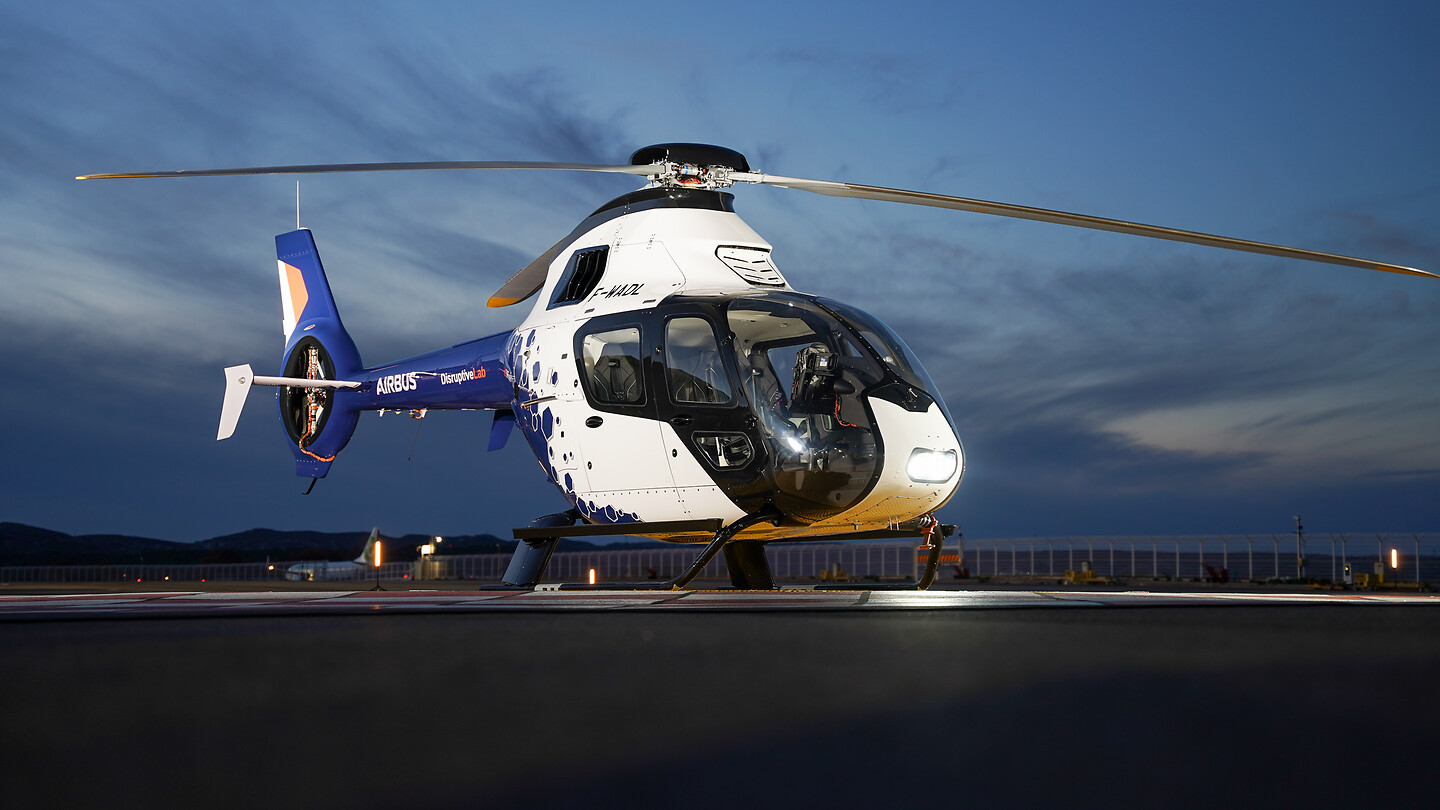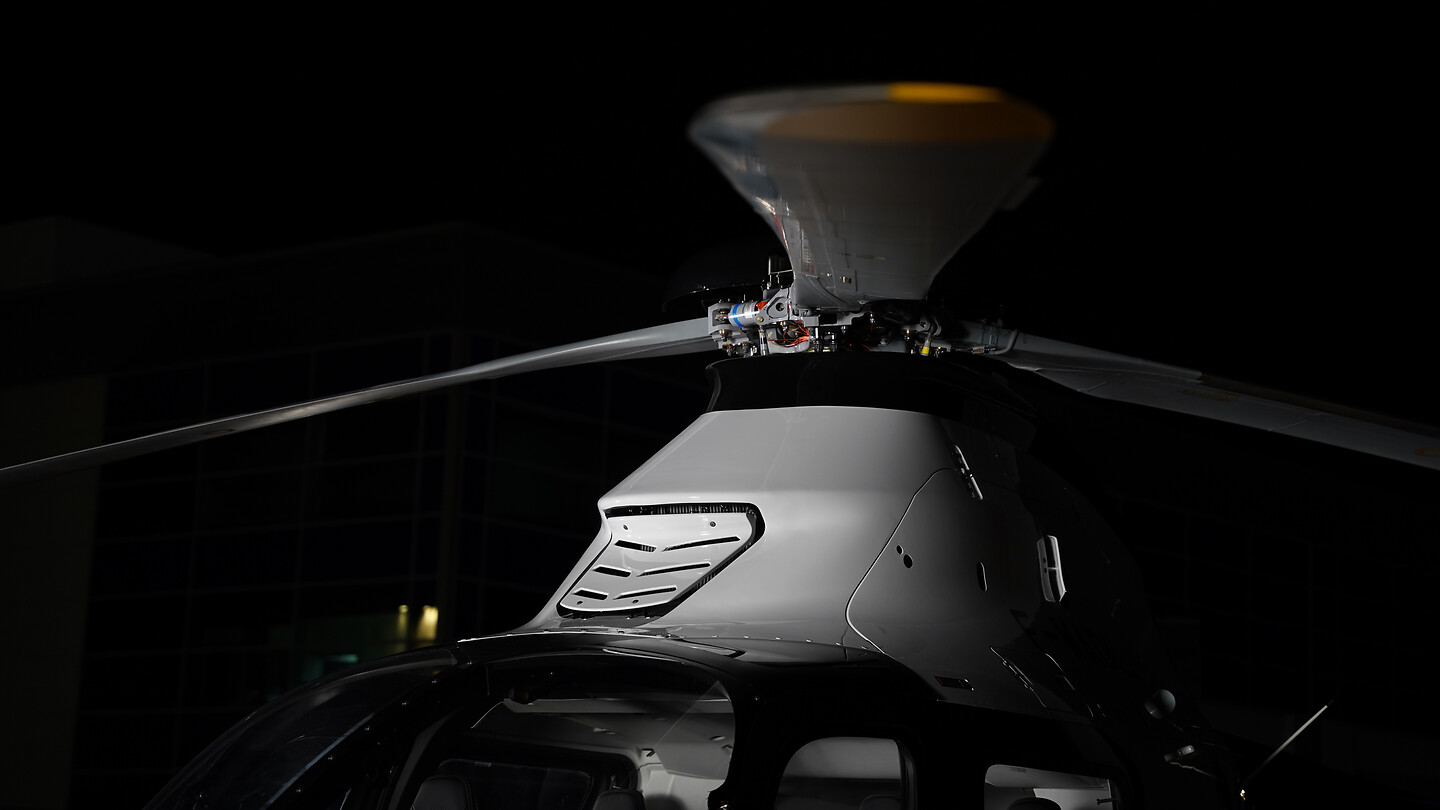Designed to test technology that will significantly reduce carbon emissions, Airbus’ DisruptiveLab concept helicopter flew for the first time in January. Tomasz Krysinski, Head of Research and Innovation at Airbus Helicopters explains the innovations inside.

Helicopters currently represent less than 1% of aviation CO2 emissions, yet to try to protect the planet for future generations, Airbus has made reducing the carbon emissions of its products an absolute priority. “At Airbus Helicopters we are committed to the IATA target of flying net zero by 2050,” states Krysinski. “This is a key driver for our innovation strategy.”
“We have a strong roadmap to meet IATA’s target, which includes different solutions: starting with the use of alternative fuels and further developing hybridisation and electrification – like the CityAirbus NextGen, our Advanced Air Mobility prototype.” However, this new age of vertical lift will not happen overnight. That’s why a key part of Airbus’ innovation strategy focuses on introducing innovations that will reduce carbon emissions.
In order to develop the next generation of innovations, Airbus relies on several flying laboratories as a way to quickly mature new technologies. The DisruptiveLab is a brand new demonstrator that flew for the first time on 13 January, with a totally new architecture. This latest flying laboratory will evaluate an efficient propulsion system by testing a fully parallel hybrid propulsion system that enables batteries to be recharged in-flight. Its new aerodynamic architecture is intended to reduce fuel consumption, by reducing mass and drag.

With a target of reducing carbon emissions by 50%, many an innovation will be tested and featured on the DisruptiveLab. We’re taking a look at the top five which Tomasz is most excited about:
- “A helicopter’s rotor hub is responsible for roughly 40% of the drag in a flight. The DisruptiveLab’s hub includes our entire blade concept with integrated dampers, which is completely compacted. Compared to previous helicopters, it offers a reduction of 40% of drag. It is really an enormous step forward.”
- Whilst it might not immediately be apparent as a source of drag, the landing gear can also have an impact on aerodynamic performance. “On every helicopter, there is always a compromise between the rotor and the landing gear, due to ground resonance. Here we are testing a completely new concept, it is highly integrated and allows us to significantly reduce the drag.”
- The shape of the fuselage is also designed to improve efficiency. “We tested 40 configurations of the fuselage in a wind tunnel. The one we selected enables us to reduce drag by 20% compared to the previous version,” notes Krysinski. “We also simplified the tail to reduce maintenance.”
- The Fenestron has also been redesigned to reduce the number of mechanical parts, “it has 40% less compared to the previous version. The best mechanical part is the part you don't have – as it will never need to be maintained. This modulated Fenestron is even quieter, easier to maintain and the diameter of the hub has also been reduced. This reduces a global part of the tail, so consequently it reduces drag.”
- With the DisruptiveLab we will also introduce reversible hybridisation, which allows transmission of power from the turbine to the batteries and vice versa. This will allow a huge reduction of CO2 emissions.

